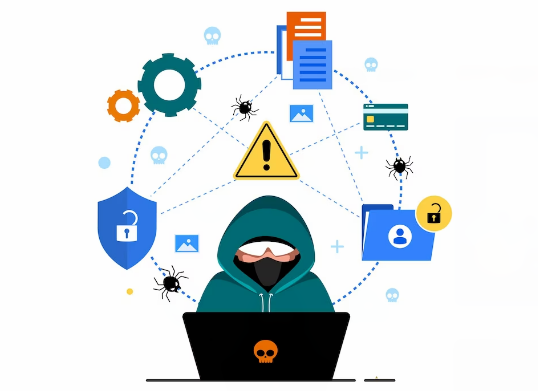Data Privacy and Compliance
Demystifying GDPR: A Comprehensive Guide to Compliance
Last Updated
2023/07/06

Introduction:
The General Data Protection Regulation (GDPR) is a comprehensive data protection law that sets strict guidelines for how organizations handle and process personal data of individuals residing in the European Union (EU). Since its implementation in May 2018, GDPR has had a significant impact on businesses worldwide. This blog post aims to demystify GDPR and provide a comprehensive guide to achieving compliance.
- Understanding GDPR:
a. Scope and Objectives: Explain the scope of GDPR and its goals in protecting individuals’ fundamental rights and freedoms concerning the processing of their personal data.
b. Key Principles: Outline the core principles of GDPR, including lawfulness, fairness, and transparency; purpose limitation; data minimization; accuracy; storage limitation; integrity and confidentiality; and accountability.
- Applicability and Compliance:
a. Territorial Scope: Discuss how GDPR applies to organizations outside the EU if they process personal data of EU residents. Explain the concept of extraterritoriality and the conditions triggering GDPR applicability.
b. Data Controller and Data Processor: Differentiate between data controllers and data processors and explain their respective responsibilities and obligations under GDPR.
c. Lawful Basis for Processing: Explain the lawful bases for processing personal data, such as consent, contract performance, legal obligations, vital interests, public task, legitimate interests, and special categories of data.
d. Individual Rights: Outline the rights granted to individuals under GDPR, including the right to access, rectification, erasure, restriction of processing, data portability, objection, and automated decision-making.
- GDPR Compliance Strategies:
a. Data Protection Impact Assessments (DPIAs): Explain the purpose of DPIAs and when they are required. Provide guidance on conducting DPIAs to identify and mitigate privacy risks.
b. Data Breach Notification: Discuss the mandatory data breach notification requirements under GDPR. Outline the steps organizations should take in the event of a data breach, including assessing the risk, notifying the supervisory authority, and communicating with affected individuals.
c. Privacy by Design and Default: Emphasize the importance of integrating privacy protections into the design and development of products and services. Provide practical strategies for implementing privacy by design and default principles.
d. Data Processing Agreements: Explain the requirements for data processing agreements between data controllers and data processors. Discuss the key elements that should be included in these agreements.
e. Cross-Border Data Transfers: Discuss the restrictions and conditions for transferring personal data outside the EU. Highlight mechanisms such as Standard Contractual Clauses (SCCs) and Binding Corporate Rules (BCRs) that organizations can utilize for lawful data transfers.
- Penalties and Enforcement:
a. GDPR Penalties: Explain the potential consequences of non-compliance with GDPR, including administrative fines that can reach up to 4% of annual global turnover or €20 million, whichever is higher.
b. Supervisory Authorities: Provide an overview of supervisory authorities’ role in enforcing GDPR and their powers to investigate, issue warnings, and impose fines.
- Benefits and Business Implications:
a. Benefits of GDPR Compliance: Discuss the benefits of GDPR compliance, including enhanced data protection for individuals, improved customer trust, strengthened data security measures, and streamlined data management practices.
b. Business Implications: Highlight the business implications of GDPR, including the need for cultural and organizational change, increased transparency, and accountability in data processing practices.
Conclusion:
GDPR compliance is a critical aspect of data protection and privacy in today’s interconnected world. By understanding the key principles, requirements, and compliance strategies outlined in this comprehensive guide, organizations can navigate the complexities of GDPR and ensure they handle personal data in a lawful, fair, and transparent manner. Embracing GDPR not only protects individuals’ rights but also strengthens
businesses’ reputation and builds trust with customers. Remember to seek legal advice and tailor your compliance efforts to your specific organizational context to ensure full adherence to GDPR requirements.
Related Posts
Get Latest Technologies, Development Tips, & Trending Solutions.

Navigating Data Breaches: Response and Mitigation Strategies
Introduction:Data breaches have become increasingly prevalent, posing significant risks to organizations and individuals alike. When a data breach occurs, it is crucial for organizations to respond swiftly and effectively to mitigate the potential damages. This blog post provides a detailed guide on navigating data breaches, including response and mitigation strategies to minimize the impact and […]

The Importance of Data Privacy: Protecting Your Personal Information Online
Introduction:In today’s digital age, where personal information is increasingly shared and stored online, data privacy has become a critical concern. Safeguarding your personal information is not only essential for protecting your identity and financial well-being but also for maintaining your privacy and control over your digital life. This blog post delves into the importance of […]